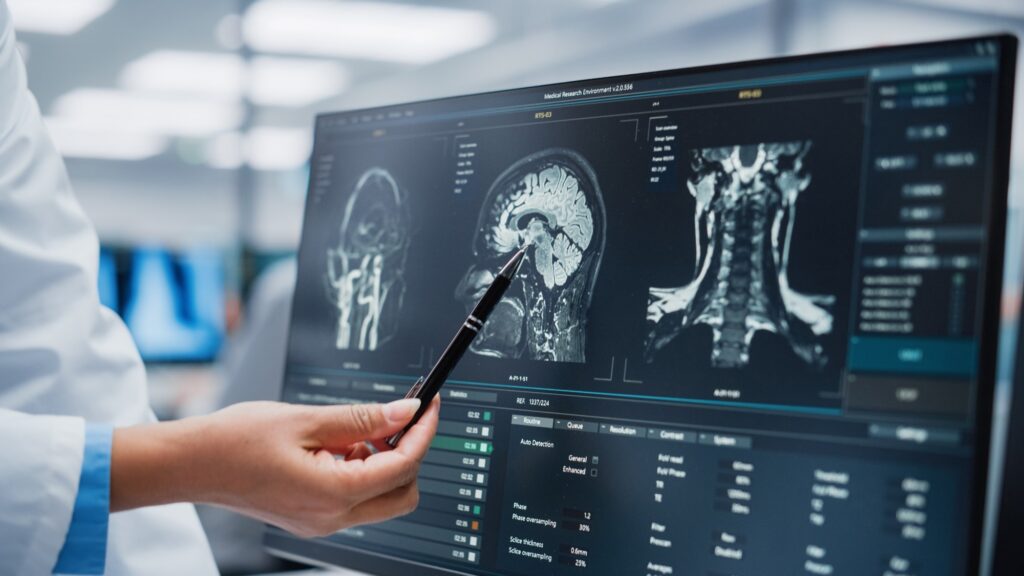In a recent study published in Nature Nanotechnology, a group of researchers developed high-density, ultrasmall, transparent graphene microelectrodes for enhanced spatial resolution in brain surface electrophysiological recordings and calcium imaging, enabling the decoding of single-cell and average neural activities from surface potentials.
Study: High-density transparent graphene arrays for predicting cellular calcium activity at depth from surface potential recordings. Image Credit: Gorodenkoff/Shutterstock.com
Background
Exploring brain mechanisms across diverse spatial and temporal scales is essential for understanding neural dynamics, necessitating tools that integrate various modalities.
Traditional transparent microelectrode technologies, despite their advancements, are limited by size and channel density.
Further research is needed to enhance the integration of these technologies with living neural tissue, optimize long-term stability and biocompatibility, and expand their application to a wider range of neurological studies and therapeutic interventions.
About the study
The researchers developed high-density transparent graphene arrays by depositing a perylene C (PC) layer on a silicon wafer with a sacrificial layer of Polydimethylglutarimide (PMGI) SF3.
They then sputtered chromium and gold to form metal wires and contact pads. The first graphene layer was transferred using electrochemical delamination, and to reduce wire resistance, it was immersed in a nitric acid (HNO3) solution.
After cleaning, a second graphene layer was added. They used a bilayer photoresist and etched the graphene with oxygen plasma, followed by cleaning. To protect the graphene during subsequent steps, they sputtered a silicon dioxide etch-stop layer on it.
After depositing and patterning another PC layer as the encapsulation layer, they removed the silicon dioxide layer to access the graphene and detached the arrays from the wafer.
For the electrode characterization, the team conducted electrochemical deposition of platinum nanoparticles (PtNPs) and electrochemical characterizations using a Gamry 600 plus in a phosphate-buffered saline solution.
Measurements were made in a Faraday cage to avoid electromagnetic noise. PtNP deposition was executed in a two-electrode configuration with a current flown from the graphene electrode to the counter electrode.
The impedance of the electrodes was found to saturate after 150 seconds of PtNP deposition.
The researchers modified the conventional Randles model to analyze the electrodes, capturing the quantum capacitance effect, the resistance of graphene wires, and pseudo-capacitance (Cp) of PtNP.
They removed the quantum capacitance component from the equivalent circuit model for the electrode/electrolyte interface, adding Cp and charge-transfer resistance (Rct) to represent the pseudo-capacitance of PtNP. Capacitances in the circuit models were extracted by fitting electrochemical impedance spectroscopy measurement data.
Animal procedures followed protocols approved by the University of California San Diego’s Institutional Animal Care and Use Committee. Adult mice were anesthetized, and a custom-built head plate was implanted in their skull.
A craniotomy was made over the left hemisphere, and the transparent PtNPs/double-layer graphene (id-DLG) electrode array was placed onto the exposed cortex.
Visual stimuli were presented to the animals, and two-photon imaging and analysis of the imaging data were conducted using a commercial two-photon microscope.
Electrophysiological recordings were made using the RHD2000 amplifier board, and the data were analyzed using custom scripts in Matrix Laboratory (MATLAB). For the analysis and correlation with calcium activity, electrodes with impedances above 10 MΩ were excluded.
The team applied various filters to the surface recordings to isolate different frequency bands and extracted the visually evoked potentials.
They also developed a neural network model in Python to predict calcium activity from the surface potentials, implementing a bidirectional long short-term memory (BiLSTM) layer and using mean squared error as the loss function.
Gaussian process factor analysis (GPFA) —a generative model—was used to extract latent representations describing the shared variability of high-dimensional data. The projected calcium signals from the BiLSTM model were compared with the true calcium signals.
For statistical analysis, a two-sided Wilcoxon rank sum test was used to compare decoding performances.
Study results
The researchers overcame significant challenges in developing high-density transparent graphene microelectrode arrays with ultrasmall electrodes. They addressed issues related to quantum capacitance in graphene, a material known for its low density of states near the Dirac point, by employing PtNPs.
This innovative method created a low-impedance path, significantly decreasing the electrode impedance from 5.4 MΩ to 250 kΩ. The team also developed an equivalent circuit model to analyze the electrochemical impedance of these electrodes, demonstrating the successful integration of id-DLG and PtNPs.
This resulted in high-yield, fully transparent graphene arrays that maintained signal quality even with ultrasmall electrodes.
In in vivo experiments, the team used these arrays to record electrophysiological signals from the cortical surface of transgenic mice while simultaneously conducting calcium imaging with two-photon microscopy.
This approach allowed the researchers to observe excitatory neurons and their compartments with single-cell resolution. They could record diverse neuronal responses to visual stimuli and ensure uniform electrophysiology recordings across the cortex.
The transparency of the graphene array and the ultrasmall size of the PtNP electrodes enabled extensive spatial coverage without obstructing the field of view, thus facilitating high-resolution observation of surface potentials over a large area of the cortex.
The researchers then employed artificial neural networks, including a single-layer BiLSTM network, to predict brain activity at deeper layers using only the high-resolution electrical recordings from the cortical surface.
The models were trained on multimodal datasets to understand the nonlinear relationships between cellular calcium activities and surface potentials.
This approach showed a strong correlation between the predicted and actual calcium activities for both layers, indicating that different channels provided complementary information for decoding.
The team also explored the feasibility of predicting single-cell activities from surface potentials using GPFA to extract low-dimensional latent variables representative of high-dimensional calcium fluorescence signals.
This method effectively inferred the calcium activity of neurons at depth using surface electrical activities.
However, they also found that population coupling was not the sole factor determining decoding performance, suggesting that while it contributes to the inference of individual cell activity, other factors are also at play.
This indicates that surface potentials recorded by the graphene arrays carry valuable information about neuronal activities across different brain layers, enabling inference of neural population dynamics even at the single-cell level.


